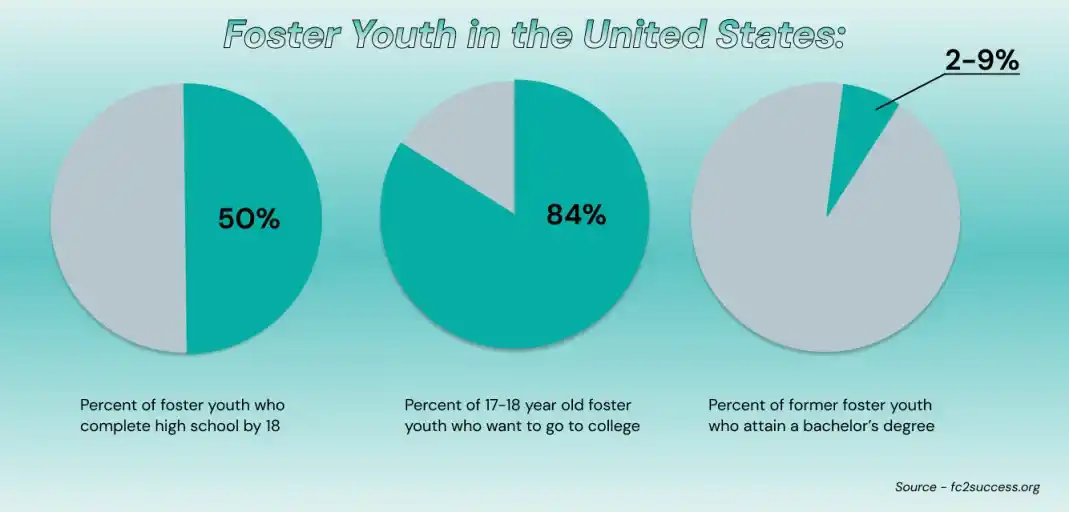Orphans and children raised in foster care tend to face significant financial challenges. The loss of parental care and the lack of traditional family support often prevent them from entering college. Financial aid in the form of scholarships ensures that vulnerable children have a fair chance to pursue higher education. They are specifically tailored to their needs and help them pay for a degree. Today, we will tell you which organizations help the orphans and offer material support for education. Of course, applicants have to compete for financial aid, and if you need assistance, you can browse our and follow them when working on your own piece.
Parentless Scholarship Entries: Do Orphans Get Free College?
Parentless children belong to vulnerable children who receive scholarships and from various governmental and non-governmental organizations. These young people usually suffer enormous moral and often physical damage. As a rule, they require specialized financial assistance to get an education.
By definition, an orphan is a person who has lost both parents. This loss can be caused by a variety of circumstances, such as illness, accident, or other unforeseen events. Foster children are children who have been placed under state care or in adopted families due to neglect or abuse in their biological families. Like orphans, children under foster care lack the resources that many students take for granted.
Scholarships for orphans and other financial aid programs are specifically designed to encourage these children to socialize and pursue a college education.

Support for Orphans: Challenges Faced by Orphaned Students in School
Undoubtedly, the school experience of a child who is suffering from parental loss for one reason or another is different from that of an average student. School years are a period when children develop their social skills and investigate the boundaries of what is permissible and acceptable. Unfortunately, they often practice these skills on those who are less fortunate than they are. Bullying is only one of the numerous challenges orphans and foster children have to deal with in college.
For orphaned students who feel overwhelmed by the challenges of education, writing a good argumentative essay can also open more doors. Essays are a platform for these students to share their stories, showcase their strength and articulate their goals. With the right guidance and support, writing a good essay can not only get you scholarships but also inspire others who are going through the same struggles.
If you’re an orphaned student looking for help, our professional writing services can help you present your thoughts in the best way possible. Whether it’s for scholarships or just to express yourself well, you can count on us to write my argumentative essay for you. With us, you’ll have a well written and impactful essay that strengthens your applications and increases your chances of winning.
Help orphan child with material support for education: The typical struggles
Among other typical problems faced by vulnerable children are:
- Emotional trauma. Orphans often experience deep emotional trauma, affecting their concentration and mental well-being in the classroom.
- Financial instability. Many children in foster care lack the funds necessary to purchase school supplies or pay for extracurricular activities.
- Interruptions in education. Due to a number of unfavorable or even tragic circumstances, vulnerable children often do not attend school consistently and experience interruptions in their education.
- Lack of support. Insufficient support and encouragement from parents often result in poor academic performance.
Stigmatization. Orphaned students often face social stigma due to their family circumstances. - Unmet basic needs. Meeting basic needs, such as housing and food, is a constant challenge for orphaned students. It may divert their attention from studies.
- Absence of or limited role models. Without parents to look up to, vulnerable children may lack positive role models who can inspire and guide them to study diligently.
We must help the orphans. For the above reasons and many more, it is extremely important not to abandon vulnerable children to their fate but to encourage them with scholarships and grants to escape from their disadvantaged circumstances and pursue a college education.
Suggested Scholarships: The Importance of Support for Education for Orphaned Students
For vulnerable children, education is not just a path to knowledge. It is a lifeline to a bright future. It gives a chance to break out of the circle of difficulties. Below, we will tell you which organizations help the orphans.
Scholarships for orphans you must know about
Help in financing education is the least that can be done for young people who have gone through difficult trials. Scholarships and grants serve this purpose. There are many scholarship options for vulnerable children, including orphans and foster children. The amounts for orphan scholarships differ, but they are quite acceptable to help the orphans.
Among the noteworthy options, we can highlight:
- The Krieger Family Scholarship is awarded to foster students who want to study social sciences. The amount is up to $2,500. To receive funds, you need to write an essay according to the guidelines.
- The Victor Micolucci Scholarship for orphans provides financial assistance of $2,300 to students who do not have parental support and can prove that they are in financial need.
- The Orphan Foundation of America scholarship can provide foster students with a sum that may go over $500 and reach up to $5,000. The applicant must be under 25 years old.
- The main goal of the Jack Pollock Scholarship is to help the orphans. According to the conditions, $2,000 is guaranteed to those who are ready to write a solid essay about themselves and their plans for education.
- The James Howard Farris Scholarship provides financial assistance of up to $500 for tuition, transportation, and basic needs.
Grants for orphans with generous funding
In addition to scholarships, grants can also serve as a substantial financial aid option for orphaned students.
- Pell Grants. Although not specifically designed for parentless children, these federal grants can be the tuition assistance they need. In the 2020-21 academic year, the amount of payment reached $6,345. To apply, students must submit a FAFSA application.
- Education and Training Vouchers (ETV). The organization grants $5,000 to help the orphans and children from foster care receive college degrees or vocational training.
- From Foster Care to Success Grant. The non-profit association offers grants to former foster children, including orphans. They provide between $1,500 and $5,000 grants for the next school year to help cover education-related expenses. The organization assesses merit and financial need before awarding funds. The word response may find the recipient via email. Out of the number of orphaned and vulnerable children who received the grant, 65% graduated college within five years.
For students who need extra support, creating presentations is a big part of academic success. Orphaned students who already have so much to deal with may find this overwhelming without the right guidance or tools. But there are professional services that can help with creating presentations that get your ideas across.
If you’re struggling to make your ideas pop, consider getting help to do my powerpoint. With expert help you can create visually stunning and well structured slides that grab your audience’s attention and get your message across. So even vulnerable students can ace presentations and show off their talent and set themselves up for a brighter future.
Orphan scholarships and grants make college education more accessible and affordable for vulnerable children.
Looking for More Orphan Scholarships? Pay Attention to These Resources
While scholarships and grants for orphans are valuable resources to help pay for education for orphaned students, it is important to explore all available ways to obtain financial aid. Here are some additional options to consider:
- Federal Application for Federal Student Aid (FAFSA). Filling out the FAFSA opens the door to a variety of federal grants, work-study programs, and low-interest loans.
- Institutional aid. Numerous colleges and universities offer their own institutional scholarships and grants. For example, the University of California, Berkeley, has a program called the Guardianship Scholarship Program. It supports current or former foster youth by offering scholarships, academic counseling, and other resources.
- State assistance programs. States’ authorities often provide financial aid programs, including a scholarship for orphans. Each has its own eligibility requirements and funding levels to help an orphan. For instance, the Washington College Grant provides high school graduates with money to attend college or vocational training in the state of Washington. Applicants must meet program requirements and attend an approved educational institution or program, either full-time or part-time.
- International scholarship for orphaned students. It includes financial assistance of $1,000 for half-orphans and orphans. The applicant must be between 17 and 22 years old.
- Employer assistance for study. If the orphaned student is working while studying, they should request the employer to provide tuition assistance.
- Private student loans can help the orphans cover tuition costs if all other options have been exhausted. Parentless learners should consider federal loans first, as they offer lower interest rates and more flexible repayment terms.
We advise you to use online scholarship search engines to find scholarships helping orphaned children. Please consider the following platforms: Fastweb, Scholarship.com, and Appily.com.
Final Thoughts on Parentless Scholarship Opportunities
The US government and various non-profit organizations try their best to help the orphans and make education more accessible. They provide a wide range of orphan scholarships, grants, work-study programs, and loans, among other assistance options. Vulnerable children should take advantage of these opportunities to enter college. We hope that this article has shed light on the support available to orphaned students to pursue their degrees.
Recommended reads





